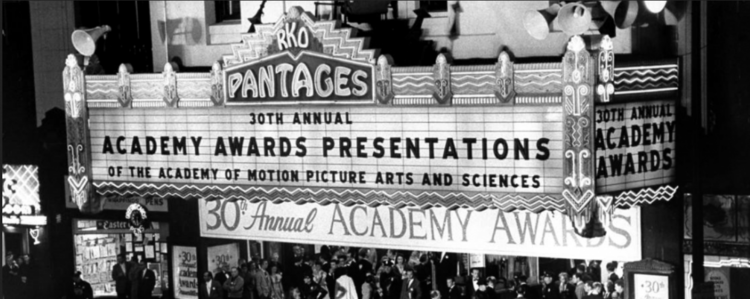
View From Lodi, CA Pittsburgh, PA: Oscars And History
By Joe Guzzardi
03/06/2010
March is the month for my occasional discussion of the Oscar ceremony. This Sunday amid much pomp and circumstance the coveted statuette will be awarded by the grandly named Academy of Motion Picture Arts and Sciences.
Let me make perfectly clear up front that my only credentials to comment meaningfully about the Oscars expired long ago.
I grew up in Hollywood during the movies' 1950 Golden Era when William Holden, Jimmy Stewart, Eva Gardner and personal favorite Kim Novak were among the day’s reigning stars.
Back in my youth, I did a fair amount of informal movie research, too. Copies of Silver Screen and Motion Picture magazines were strewn about my house, the barber shop and the local diner. Next to baseball, reading about Hollywood scandals was my second favorite pastime.
About today’s movies, I know next to nothing. Of the ten nominated for best, I have seen none. Ten actors and actresses have been tapped as potentially Oscar’s best but I recognize only six names.
The last movie I saw in a theater was Frost/Nixon, a 2009 nominee that, because of its highbrow subject matter, was doomed to lose.
Scant qualifications aside, however, I will not be deterred from opining. That’s one of the liberties of an opinion columnist and I fully intend to take advantage of it.
My twist is that instead of speculating about which actor will win, to which I have already confessed about knowing little, I'll share with you information about the Academy’s Museum of Motion Pictures, a valuable project in progress that will be a boon not only to the movie industry but to its worldwide fans.
The museum’s eight-acre campus, tentatively scheduled to open in 2014, will acquaint movie fans with cinema’s Golden Era as well as other historic periods.
Its goal is to create a place to explore how film reflects and shapes world culture by helping fans of all ages grasp what the movies have meant — and continue to mean — in our lives.
With the influence of American standards undiminished in many western countries, understanding why we make an impact is important.
For example, the museum will probe the question of who are our heroes and how have they changed over time? Some may answer John Wayne, then and now.
Related questions will explore how films have depicted controversial issues like civil rights, religion, gender relations, poverty and war. How have they shaped our sense of masculinity, femininity and romance? How have Hollywood and Southern California affected the image of the United States, at home and abroad?
To help provide the answers, visitors will be able to view films within their historical, cultural and technological contexts.
The museum will stress not only the finished film but also the creative process behind the movie.
Each of the movie making crafts will be explained to visitors by inviting them onto a simulated soundstage, an art department, a post-production studio or the Oscar show itself.
Visitors will also be allowed to sit in an imaginary director’s chair, costume a character, light a starlet, choose a location, cast a film, edit a trailer, score a movie and even walk the red carpet.
From thirteen possible museum locations, the committee settled on the most obvious, the corner of the famous Hollywood and Vine and across from the Pickford Center.
The museum, which will host premiers and tributes in its state-of-the-art theater, will be open all year. Museum officials are confident that the new venture will have a longer lasting, more positive impact on the movie industry than the transient annual awards ceremony.
As an added bonus, the museum should bring more tourists to the beleaguered, financially destitute Los Angeles and its home state California.
P.S. I recommend that instead of watching the tedious Oscar ceremony to rent a copy of the 90-minute western classic Bad Day at Black Rock starring Spencer Tracy, Robert Ryan, Lee Marvin and filmed in famous Lone Pine, California.
